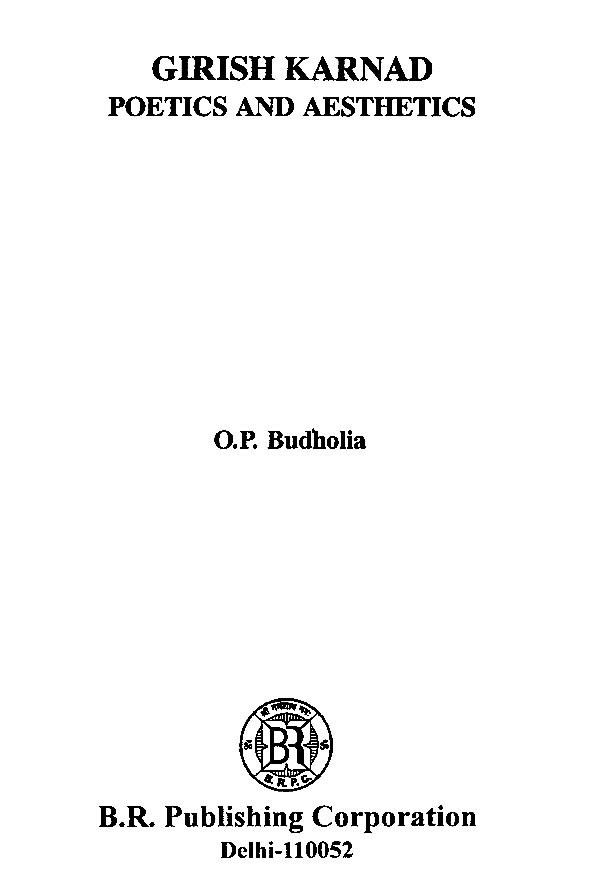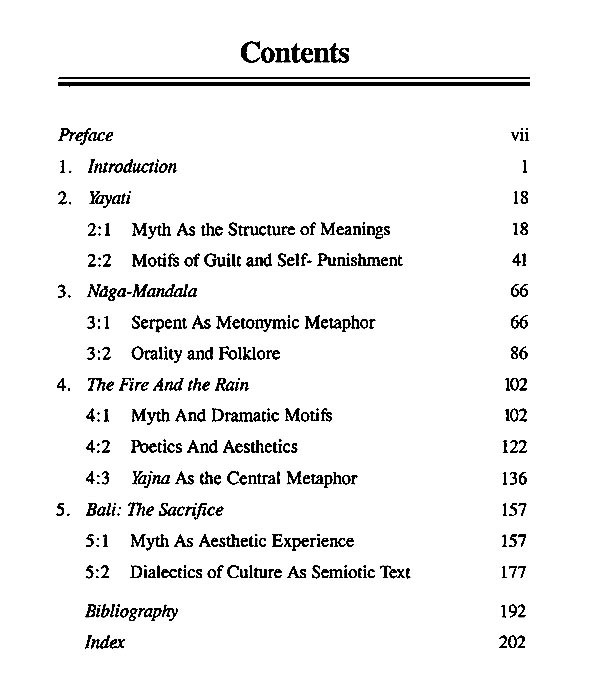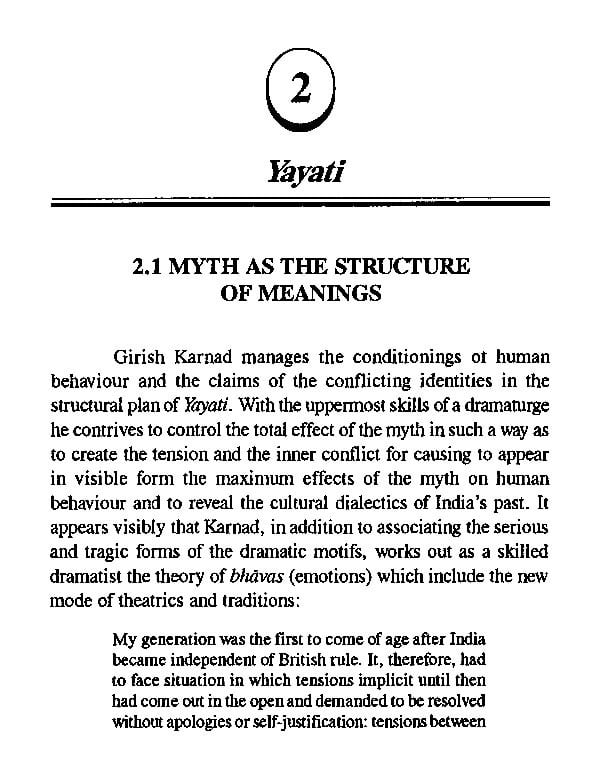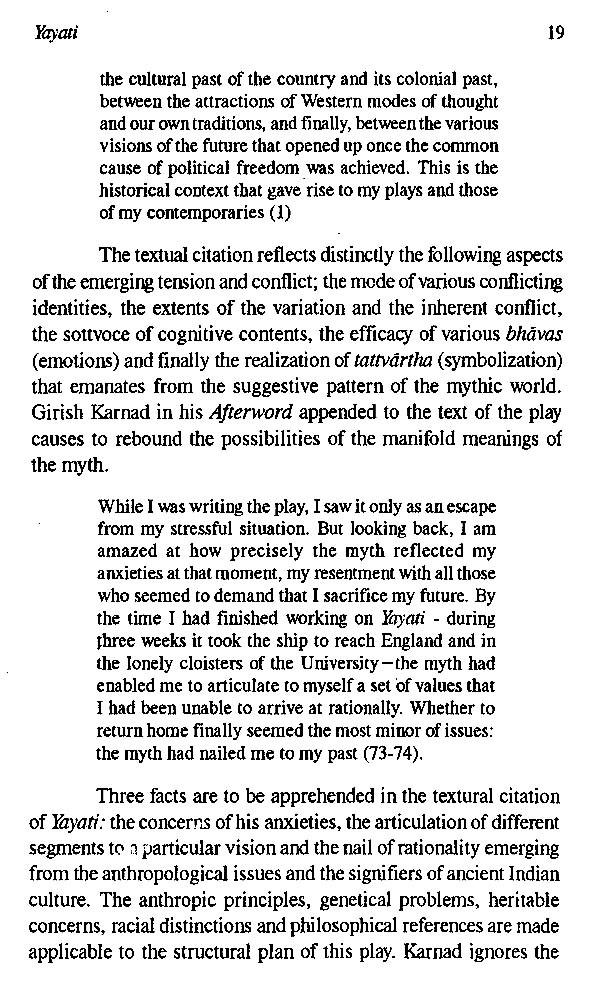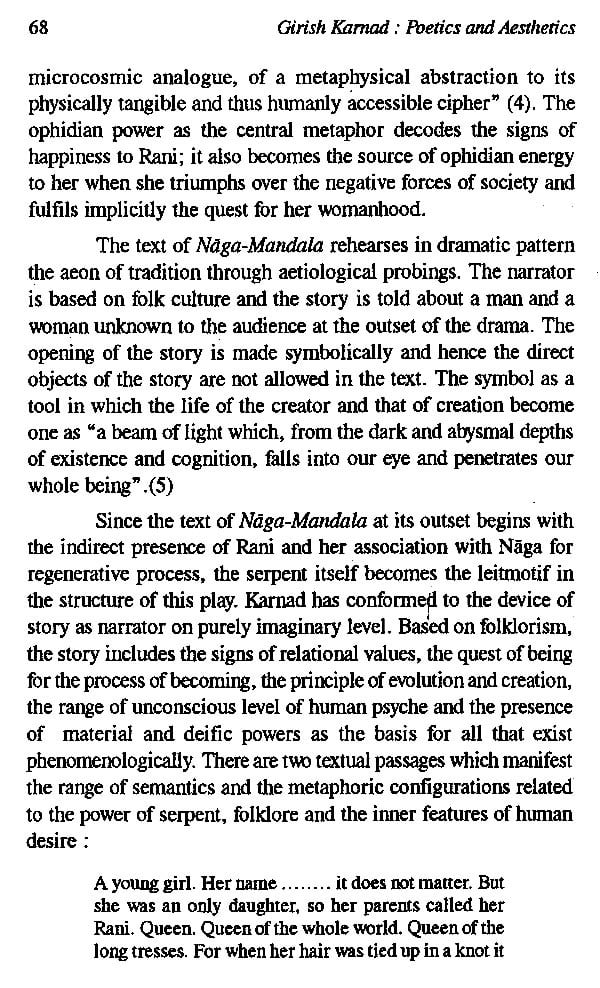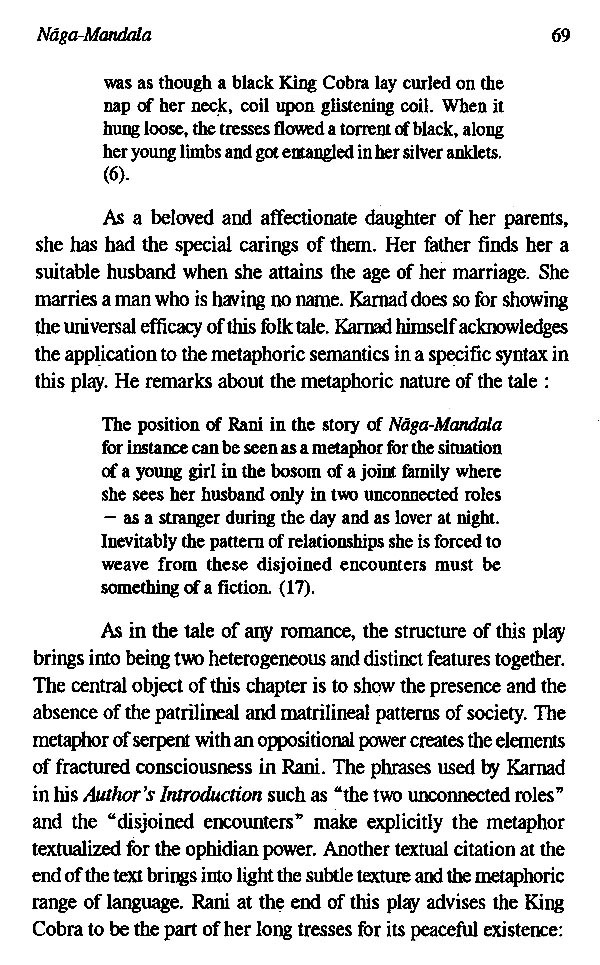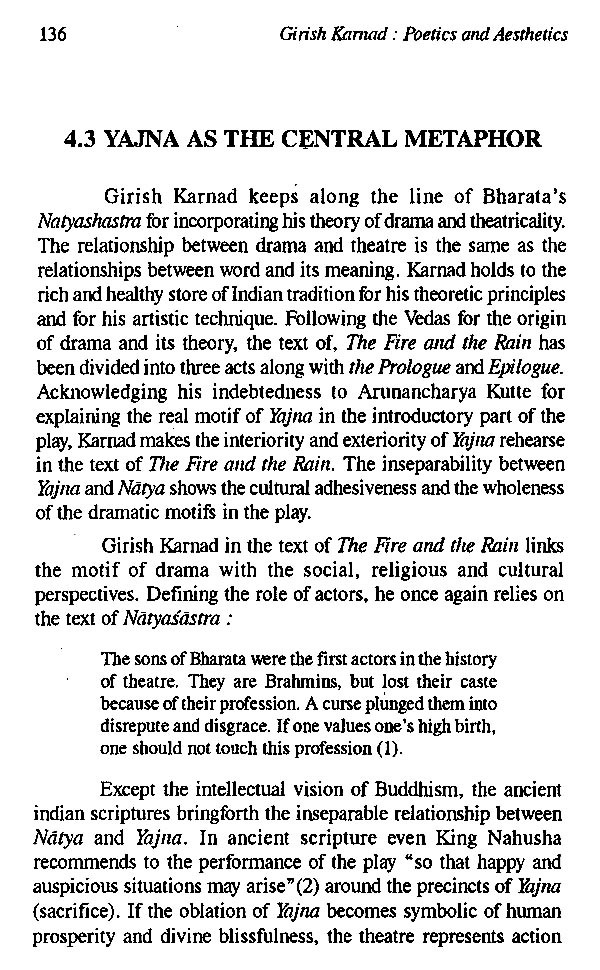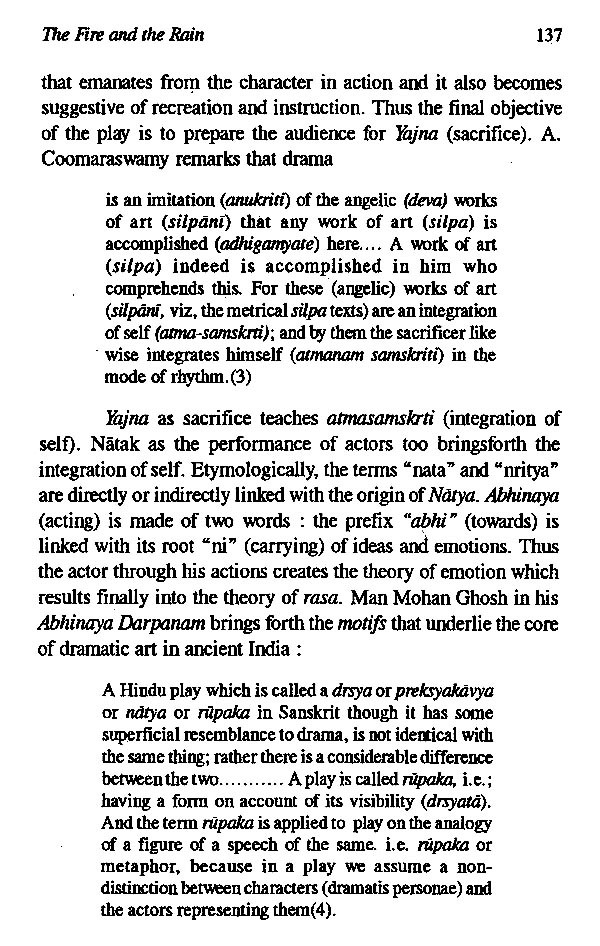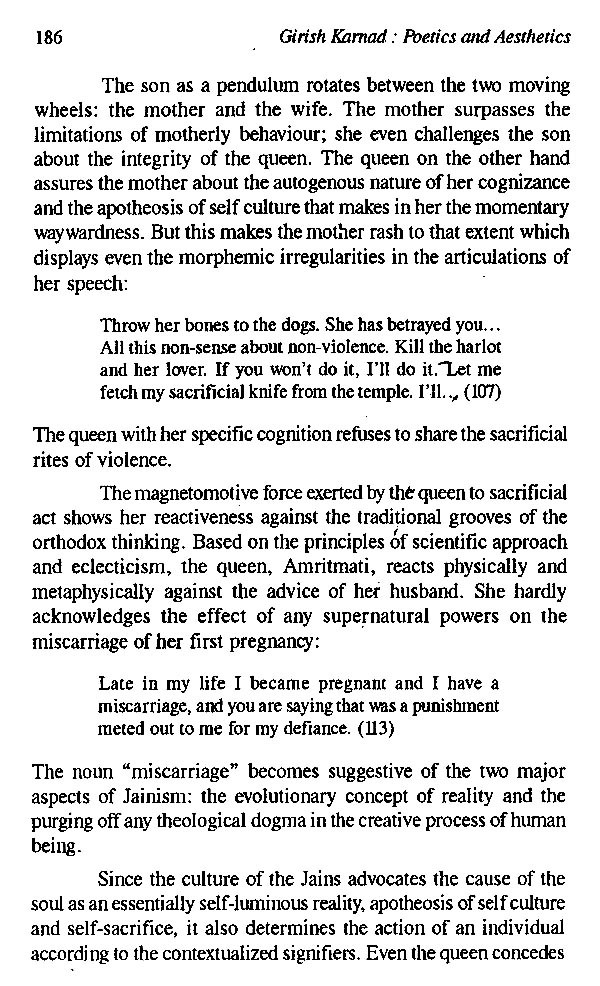About the Book This book, apart the inclusion of Introduction, consists of four chapters and total nine subtitles out of the four core chapters. Girish Karnad as a playwright envisages the dramatics and theatrics of Natyasastra by which he makes an application to the theatrics of poetics and aesthetics. The suggestive pattern as the tranperlnalization and universalization of the emotional response and social values give birth to an emotional intensity for the realization of the aesthetic experience of literature. Karnad makes the use of myths, symbols, metaphors and folkloristic devices for displaying the causative effects. Myth as 'palimpsest' constructs and re-constructs the new meanings apart from the inherent connotations in it. The two plays such as yayari and The Fire and the Rain are based on the myths of The Mahabharata. The myths of Yayati and Yavakri are so worked out as they evince the complicated world of human relationships, aesthetics. Bali: The Sacrifice is based in the myth of Cock of Dough and myth is so operated in the text as it reveals the dealectics of socioentric referents and the de ethno centralized values of two religions: the tantric principles of Hinduism and the non violence of Jainism. In Naga-Mandala, the dramatist uses the metaphor of Naga (serpent) for showing forces: human being and reptile. Written with the clarity of perception, the book in the present format will prove interesting and useful to both the students and scholars alike.
About the Author Dr. Om Prakash Budhofia has been teaching undergraduate and postgraduate classes for the last thirty years and presently he is Professor of English, Govt. KRG College, an autonomous College of Jiwaji University, seminars and conferences, he has delivered many lectures in U.G.C. sponsored refresher courses and other extension lectures in various colleges and universities of India. He is an Associate Editor of a reputed journal, The Journal of Contemporary Literature (Allahabad), an Assistant Editor of a renowned and scholarly journal, Point of View (Ghaziabad) and he is also on the Board of Advisors for the scholarly journals, The Quest (Ranchi), Labyrinth (Gwalior) The Expression (Rae Bareli) and Sodh Dhara (Orail). In addition to reviewing books, writing introductions and forwards, Dr. Budholia has published over thirty five papers and serious articles on English literature, Indian English Literature and Indian Poetics in various National/International journals and anthologies. He is well known for his notable full-length studies are: George Eliot: Art and Vision in Her Novels (New Delhi: 1999). Critical Essays on Indian English literature (Jaipur: 2003) Girish Karnad: History and Folklore (2010) He has also edited the following books: Generic Manifolds: Indian English Literature Since 1950 (New Delhi2007). Seeds in Spring: Contemporary Indian English Poetry, Drama and Critics (New Delhi: 2008) and Indian English Literature: Retrospect and Prospect Jaipur 2010).
Preface Mirish Karnad holds a distinctive and a widely acclaimed place Among the contemporary playwrights of Indian English literature. As a dramatist, he experiments with tradition and makes some new innovations in revealing the social issues of contemporary society and making an application to cultural configurations. Imbued with Indian imagination, Karnad undergoes some influences of the Western theories on his dramatic art. He makes an application to the principles of Indian poetics, aesthetics and theatrics; he also envisages the application of the Western theories such as the inclusion of the feministic trends, psychoanalysis and the reader-response theories in the text of his plays.
The present monograph copes with such plays that are specifically meant for administering to the theories of poetics, aesthetics and the cultural configurations. The plays such as Yayati, Naga-Mandala, The Fire and the Rain and Bali: The Sacrifice has been analyzed for exhibiting the theories of poetics and aesthetics. The entire contents, apart from Introduction, have been divided into four chapters. The efforts have been made to examine the creative thinking and the poetic imagination of the dramatist for employing the myth, symbol and metaphor in the text of these plays. Karnad has galvanized the indigenous myths which have been derived either from the Mahabharata or from other epics of India. He makes the use of oral tradition in such a way as to make visible the hidden and ecliptic intents of human mind, the complication in human relationships and the cultural configurations of India as a nation.
Introduction Drama as the literary expression includes in its contents the traditional ethos, empiric mode of knowledge and cultural signs, on the one hand, and the inclusion of human values and the emotional range of art, on the other. The genre of drama, to begin with its origin and development, is meant to analyse the behavior of man in action, the anthropological structure of society and the development of social organization, and the mimetic representation of human life. The history of drama is as old as the existence of man on this earth. Indian drama has got its divine origin and hence it includes in its purview the cultural signification and an inclusion of the various form of emotions for its performance, the realistic overtones and the distinguishing features such as the traditional heritage, folklore, the oral signs of literature, myth and mythopoeia vision, secular and religious approaches to life, the art of dance and music, the arousal of latents and the rasa-realization and finally an inherent message in the text.
**Contents and Sample Pages**
